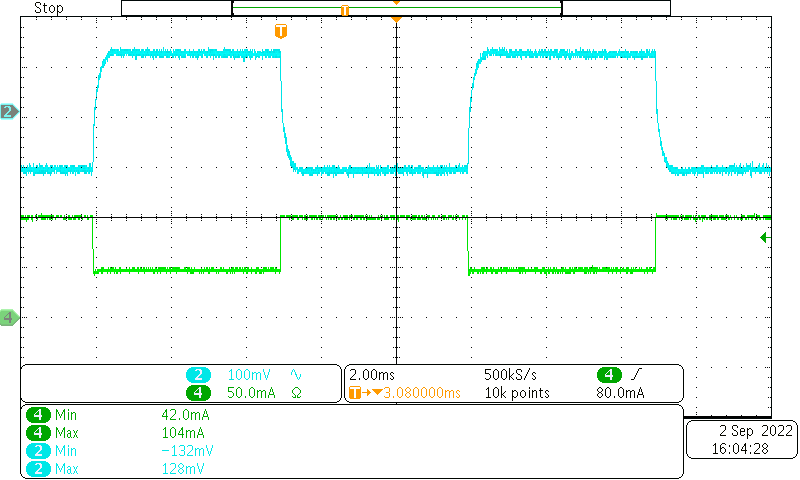TIDT382 February 2024
- 1
- Description
- Features
- Applications
- 1Test Prerequisites
- 2Testing and Results
- 3Waveforms
- 4Summary
- 5References
3.4.2 SN6507-Q1 Load Transients
SN6507-Q1 load transient waveforms are shown in the following figure.

Channel 2: AC-coupled output voltage at 15 VOUT, bandwidth limited (20MHz), [scale: 100mV/div, 2ms/div]
Channel 4: Load transient from 50mA to 100mA and 100mA to 50mA, slew rate 0.25A/μs [scale: 50mA/div, 2ms/div]
Figure 3-15 SN6507-Q1 Load TransientChannel 4: Load transient from 50mA to 100mA and 100mA to 50mA, slew rate 0.25A/μs [scale: 50mA/div, 2ms/div]